
Lake Powell: A Desert Oasis of Adventure and Beauty
Discover the stunning beauty and endless adventure at Lake Powell, a desert oasis nestled between the red rock canyons of Utah and Arizona.
Lake Powell, located in the heart of the American Southwest, is a stunning reservoir that offers a unique blend of natural beauty and recreational opportunities. Nestled between the red rock canyons of Utah and Arizona, this man-made wonder is part of the Glen Canyon National Recreation Area. With its crystal-clear waters and over 2,000 miles of shoreline, Lake Powell is a paradise for water sports enthusiasts, nature lovers, and photographers alike. One of the most popular activities at Lake Powell is boating. Whether you prefer sailing, power boating, or kayaking, the vast expanse of the lake provides endless opportunities for exploration. Houseboats are a unique way to experience the lake, allowing visitors to stay on the water and access remote areas that are otherwise difficult to reach. Renting a houseboat for a few days or even a week can be an unforgettable adventure. For those who love to hike, the surrounding landscape offers numerous trails with breathtaking views. One of the most famous hikes is to Rainbow Bridge, one of the world's largest natural bridges. This awe-inspiring geological formation is accessible by boat and a short hike, making it a must-see for visitors. Additionally, the nearby slot canyons, such as Antelope Canyon, provide an otherworldly experience with their narrow, winding passages and vibrant colors. Fishing is another popular activity at Lake Powell. The lake is home to a variety of fish species, including bass, catfish, and striped bass. Anglers can enjoy both shore fishing and deep-water fishing, with numerous coves and inlets providing perfect spots to cast a line. Guided fishing tours are also available for those looking to improve their chances of a big catch. Lake Powell is not only about adventure; it's also a place to relax and soak in the natural beauty. The serene waters, dramatic cliffs, and clear skies create a perfect backdrop for a peaceful getaway. Whether you're lounging on a sandy beach, swimming in the cool waters, or enjoying a sunset cruise, Lake Powell offers a unique and memorable experience for every traveler.
Local tips in Lake Powell
- Visit during spring or fall to avoid the summer heat and enjoy pleasant weather.
- Renting a houseboat is a great way to explore the lake and access remote areas.
- Don't forget to bring plenty of water and sun protection, as the desert sun can be intense.
- Check out the local marinas for boat rentals, guided tours, and fishing equipment.
- Make sure to visit Rainbow Bridge and Antelope Canyon for unforgettable natural sights.
Lake Powell: A Desert Oasis of Adventure and Beauty
Lake Powell, located in the heart of the American Southwest, is a stunning reservoir that offers a unique blend of natural beauty and recreational opportunities. Nestled between the red rock canyons of Utah and Arizona, this man-made wonder is part of the Glen Canyon National Recreation Area. With its crystal-clear waters and over 2,000 miles of shoreline, Lake Powell is a paradise for water sports enthusiasts, nature lovers, and photographers alike. One of the most popular activities at Lake Powell is boating. Whether you prefer sailing, power boating, or kayaking, the vast expanse of the lake provides endless opportunities for exploration. Houseboats are a unique way to experience the lake, allowing visitors to stay on the water and access remote areas that are otherwise difficult to reach. Renting a houseboat for a few days or even a week can be an unforgettable adventure. For those who love to hike, the surrounding landscape offers numerous trails with breathtaking views. One of the most famous hikes is to Rainbow Bridge, one of the world's largest natural bridges. This awe-inspiring geological formation is accessible by boat and a short hike, making it a must-see for visitors. Additionally, the nearby slot canyons, such as Antelope Canyon, provide an otherworldly experience with their narrow, winding passages and vibrant colors. Fishing is another popular activity at Lake Powell. The lake is home to a variety of fish species, including bass, catfish, and striped bass. Anglers can enjoy both shore fishing and deep-water fishing, with numerous coves and inlets providing perfect spots to cast a line. Guided fishing tours are also available for those looking to improve their chances of a big catch. Lake Powell is not only about adventure; it's also a place to relax and soak in the natural beauty. The serene waters, dramatic cliffs, and clear skies create a perfect backdrop for a peaceful getaway. Whether you're lounging on a sandy beach, swimming in the cool waters, or enjoying a sunset cruise, Lake Powell offers a unique and memorable experience for every traveler.
When is the best time to go to Lake Powell?
Iconic landmarks you can’t miss
Rainbow Bridge National Monument
Explore the breathtaking Rainbow Bridge National Monument, a natural wonder showcasing stunning rock formations and rich cultural heritage in Utah.

Alstrom Point
Discover the stunning vistas of Alstrom Point in Utah, a hidden gem showcasing breathtaking views of Lake Powell and the enchanting red rock landscape.
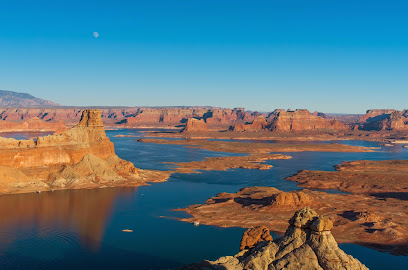
Cathedral in the Desert
Discover the breathtaking beauty of the Cathedral in the Desert, a natural wonder in Utah that captivates adventurers and nature lovers alike.

West Canyon
Experience the breathtaking beauty of West Canyon, Utah, where stunning landscapes and outdoor adventures await in a natural paradise.

Unmissable attractions to see
Horseshoe Bend
Discover the breathtaking beauty of Horseshoe Bend, a stunning natural landmark in Arizona, perfect for photography and outdoor exploration.

Ken's Tours Lower Antelope Canyon
Discover the breathtaking beauty of Lower Antelope Canyon through Ken's Tours, where stunning rock formations and vibrant colors await every adventurer.

Antelope Canyon Tours - by Carolene Ekis
Discover the enchanting beauty of Antelope Canyon, Arizona's iconic slot canyon, where light dances through stunning rock formations.
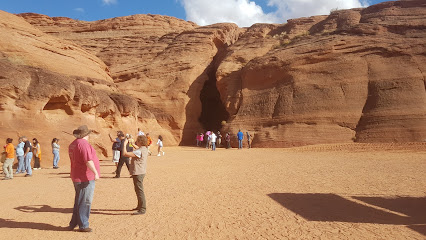
Antelope Slot Canyon Tours by Chief Tsosie
Explore the stunning Antelope Slot Canyon with Chief Tsosie and immerse yourself in the breathtaking beauty of nature's artistry.

Glen Canyon Dam Overlook
Discover the stunning vistas at Glen Canyon Dam Overlook, where nature's beauty meets human engineering in the heart of Arizona.

Historic Navajo Bridge
Explore the Historic Navajo Bridge, an architectural gem offering stunning views over Marble Canyon and a glimpse into the rich Navajo heritage.

Wahweap Overlook
Discover the stunning views of Lake Powell at Wahweap Overlook, a must-see destination for nature lovers and photographers in Arizona.

Horseshoe Bend Slot Canyon Tours
Experience the breathtaking Horseshoe Bend and enchanting Slot Canyon tours, where adventure meets stunning natural beauty in Arizona.

Carl Hayden Visitor Center
Explore Glen Canyon's beauty at the Carl Hayden Visitor Center - your guide to stunning landscapes and unforgettable adventures in Page, Arizona.

Lees Ferry
Explore the stunning landscapes and rich history of Lees Ferry in Marble Canyon, a scenic haven for outdoor enthusiasts and nature lovers.

Glen Canyon Dam
Explore the Glen Canyon Dam, a stunning hydroelectric power plant that combines breathtaking views of Lake Powell with fascinating engineering.

Lake Powell Paddleboards and Kayaks
Discover the wonders of Lake Powell with exciting paddleboard and kayak adventures, perfect for all skill levels amidst stunning landscapes.

Antelope Canyon
Explore the breathtaking beauty of Antelope Canyon, a stunning slot canyon in Arizona known for its vibrant colors and enchanting light beams.

The Chains
Explore the stunning landscapes of The Chains in Page, Arizona - a hiker's dream filled with majestic rock formations and breathtaking views.

Hanging Garden Trailhead
Uncover the stunning beauty of the Hanging Garden Trailhead, a hiker's paradise in Page, Arizona, surrounded by picturesque landscapes and vibrant ecosystems.

Essential places to dine
Big John's Texas BBQ
Experience authentic Texan barbecue at Big John's Texas BBQ in Page, Arizona - where every bite tells a story of flavor and tradition.
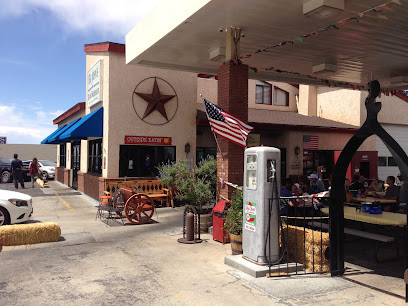
El Tapatio
Experience the vibrant flavors of Mexico at El Tapatio in Page, Arizona—where every meal is a celebration of culture and taste.

Fiesta Mexicana Restaurant
Experience authentic Mexican flavors at Fiesta Mexicana Restaurant in Page, AZ – where every meal is a celebration.

BirdHouse
Savor delicious chicken dishes at BirdHouse in Page, AZ—a favorite fast food destination known for quality flavors and budget-friendly prices.

Gone West Family Restaurant
Experience family-friendly dining at Gone West Family Restaurant in Page, AZ – savor delicious Southwestern cuisine with live music and unique gifts.

State 48 Tavern
Discover delicious American cuisine at State 48 Tavern in Page, AZ - your ideal dining spot after exploring Lake Powell's beauty.

Ranch House Grille
Discover authentic Southwestern American cuisine at Ranch House Grille in Page, Arizona—perfect for breakfast or lunch amidst stunning landscapes.

Dam Bar & Grille
Discover flavorful grill specialties and refreshing drinks at Dam Bar & Grille, your perfect dining stop in scenic Page, Arizona.

Slackers
Experience mouth-watering burgers at Slackers in Page, AZ - where flavor meets friendly service in a vibrant setting.

Strombolli’s Italian Restaurant & Pizzeria
Experience authentic Italian cuisine at Strombolli’s in Page, AZ—where delicious pizzas and pastas await every visitor.

Jack in the Box
Savor delicious fast food delights at Jack in the Box in Page, AZ - perfect for travelers craving quick bites!

New York Teriyaki
Savor authentic Japanese flavors at New York Teriyaki - a culinary gem in Page, Arizona offering delicious teriyaki dishes.

Sunset 89
Experience delightful American cuisine with breathtaking views at Sunset 89 in Page, Arizona—where every meal is accompanied by nature's finest spectacle.

Bonkers Restaurant
Experience the perfect blend of Italian and American cuisines at Bonkers Restaurant in Page, AZ – where every meal is a celebration of flavor.
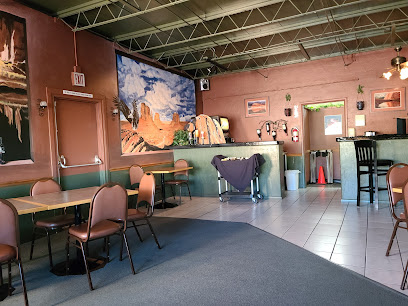
Canyon Crepes Cafe
Discover delicious crepes at Canyon Crepes Cafe in Page, AZ - your perfect breakfast destination with stunning views.
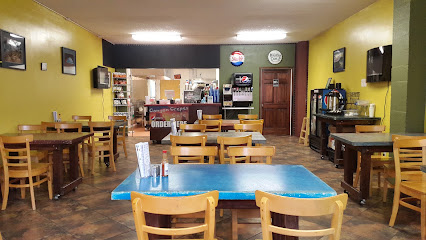
Markets, malls and hidden boutiques
Walmart Supercenter
Experience the convenience of Walmart Supercenter in Page, Arizona - your all-in-one destination for groceries, clothing, and more while enjoying your travels.

Hot n Sweet Coffee and Donut Shop
Savor delicious donuts and artisanal coffee at Hot n Sweet Coffee and Donut Shop in Page, AZ, the perfect treat after exploring breathtaking landscapes.

Lake Powell Paddleboards and Kayaks
Discover the beauty of Lake Powell with paddleboard and kayak rentals, guided tours, and a charming gift shop in Page, Arizona.

Lake Powell Espresso
Experience the cozy charm and quality brews at Lake Powell Espresso, a delightful coffee shop in the heart of Page, Arizona.

Page Plaza
Discover Page Plaza, the ultimate shopping destination in Page, Arizona, offering a variety of stores and dining experiences in a vibrant atmosphere.

DamPlaza
Explore DamPlaza in Page, Arizona – a vibrant shopping mall featuring diverse stores and delicious dining options, perfect for tourists seeking local flair.

Lake Powell Massage & Spa Boutique
Discover the ultimate relaxation experience at Lake Powell Massage & Spa Boutique with expert treatments and a serene atmosphere in Page, Arizona.
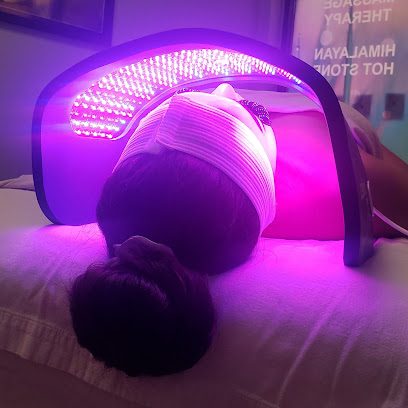
Dollar Tree
Explore Dollar Tree in Page, Arizona for unmatched bargains on groceries, crafts, and unique gifts, all priced at one dollar.

Page Lake Powell Furniture
Explore Page Lake Powell Furniture: Your destination for quality home goods and unique furnishings in the heart of Arizona's breathtaking landscapes.

Lake Powell Rentals and Retail
Discover Lake Powell Rentals and Retail - Your ultimate adventure hub for unforgettable experiences in the breathtaking landscapes of Lake Powell.

Stix Liquor & Sporting Goods
Discover Stix Liquor & Sporting Goods in Page, AZ - your one-stop shop for beverages and fishing gear in the heart of Arizona's outdoor paradise!

Bullfrog Marina Corner Store
Discover the Bullfrog Marina Corner Store at Lake Powell for all your adventure supplies, snacks, and unique souvenirs in a picturesque setting.

Circle K
Explore Page, AZ with ease at Circle K – your one-stop convenience store for snacks, fuel, and essentials.

Pow Wow Trading Post
Explore the rich cultural tapestry of the Southwest at Pow Wow Trading Post in Page, Arizona, where unique treasures await every visitor.
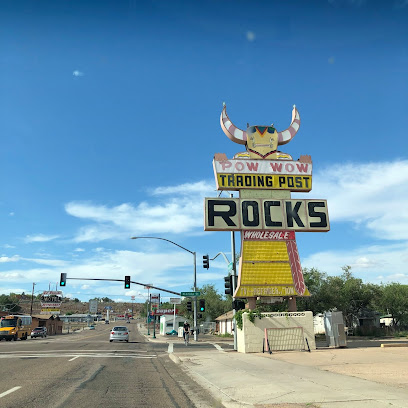
Page Bead Store
Explore the vibrant Page Bead Store in Arizona for unique beads and handcrafted jewelry that celebrate local artistry.

Essential bars & hidden hideouts
Big John's Texas BBQ
Experience the best of Texas barbecue in Page, Arizona, where every meal is a celebration of flavor and hospitality.

El Tapatio
Experience the vibrant flavors of Mexico at El Tapatio, a top-rated restaurant in Page, Arizona, known for its delicious food and lively atmosphere.

BirdHouse
Experience the best chicken in Page, Arizona, at BirdHouse, where flavorful dishes meet friendly service in a cozy atmosphere.

Gone West Family Restaurant
Experience the essence of the Southwest at Gone West Family Restaurant, where great food, live music, and family fun come together.

State 48 Tavern
Discover the vibrant atmosphere and delicious American cuisine at State 48 Tavern, a top dining spot in Page, Arizona, perfect for relaxation and enjoyment.

Ranch House Grille
Savor the best of Southwestern American cuisine at Ranch House Grille, where hearty breakfasts and delicious lunches await in scenic Page, Arizona.
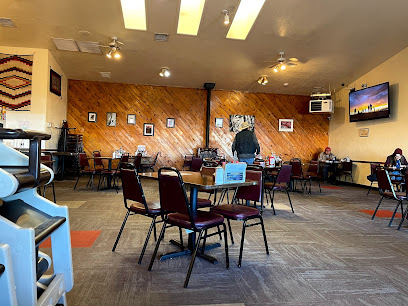
Dam Bar & Grille
Experience the best of grilled cuisine and refreshing drinks at Dam Bar & Grille in Page, Arizona—where good times meet great flavors.
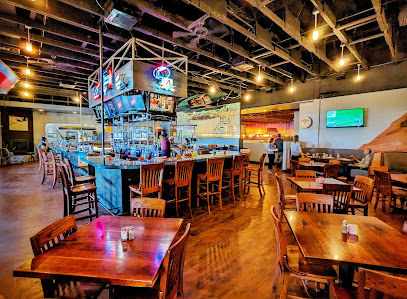
Slackers
Discover the best burgers in Page, Arizona at Slackers, where flavor and quality meet in a welcoming atmosphere.

Sunset 89
Experience the breathtaking sunsets and delicious cuisine at Sunset 89, the perfect bar and restaurant in Page, Arizona, for travelers seeking relaxation.

Rodeway Inn at Lake Powell
Experience comfort and convenience at Rodeway Inn at Lake Powell, your gateway to stunning outdoor adventures in Arizona's breathtaking landscapes.
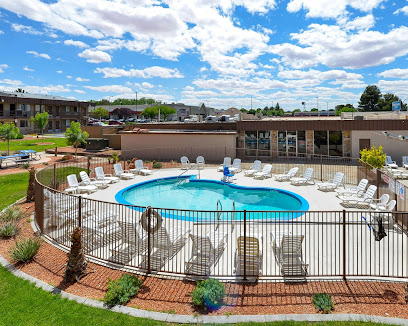
Bonkers Restaurant
Savor a unique blend of Italian and American cuisine at Bonkers Restaurant, a must-visit dining experience in Page, Arizona.

Grand Canyon Brewing +Distillery
Discover the authentic taste of American cuisine and craft beers at Grand Canyon Brewing + Distillery, a must-visit in Page, Arizona.

Lake Powell Espresso
Discover the charm of Lake Powell Espresso, where quality coffee and a warm atmosphere meet in the scenic town of Page, Arizona.

Bullfrog Marina - Utah
Discover Bullfrog Marina in Utah - your perfect blend of dining, adventure, and stunning views at Lake Powell.

The Bowl
Discover the perfect blend of delicious grilled cuisine and exciting bowling at The Bowl in Page, Arizona, a must-visit spot for tourists.

Local Phrases about Lake Powell
-
- HelloYá'át'ééh
[yah-ah-tay] - GoodbyeAhéhee'
[ah-hay-hay] - YesDíí
[dee] - NoT'áá
[taah] - Please/You're welcomeNí hao
[nee how] - Thank youAhéhee'
[ah-hay-hay] - Excuse me/SorryMás bik'eh hózhǫ'
[mahs bee-keh hoh-zhon] - How are you?Yá'át'ééh abiní
[yah-ah-tay ah-bee-nee] - Fine. And you?Bee ak'is
[bee ah-kees] - Do you speak English?Díí bizaad yoo at'é?
[dee bee-zaad yoo ah-tay] - I don't understandAwe'á
[ah-way-ah]
- HelloYá'át'ééh
-
- I'd like to see the menu, pleaseNíłch'i menu baa ní
[neel-chee menu bah nee] - I don't eat meatNíłch'i yázhí áadoo ní
[neel-chee yah-zhee ah-doo nee] - Cheers!Wóózhii
[woh-zhee] - I would like to pay, pleaseNí baa hózhǫ'
[nee bah hoh-zhon]
- I'd like to see the menu, pleaseNíłch'i menu baa ní
-
- Help!T'áá hwó'á
[taah hwo-ah] - Go away!Béésh goo hwó'á
[bay-sh go hwo-ah] - Call the Police!Bilas hózhǫ'
[bee-las hoh-zhon] - Call a doctor!Bilas yázhí
[bee-las yah-zhee] - I'm lostT'áá hwó'á
[taah hwo-ah] - I'm illT'áá hwó'á
[taah hwo-ah]
- Help!T'áá hwó'á
-
- I'd like to buy...Níłch'i yííł.
[neel-chee yee-eel] - I'm just lookingT'áá shoodlá
[taah shoo-dlah] - How much is it?Shí éí baa hózhǫ'
[shee ay bah hoh-zhon] - That's too expensiveDí'áásh nizhóní
[dee-ah-ahsh nee-zhon-ee] - Can you lower the price?Nihí ní hahdééł
[nee-hee nee hah-day-l]
- I'd like to buy...Níłch'i yííł.
-
- What time is it?Ndaa yázhí yiní?
[ndah yah-zhee yee-nee] - It's one o'clockTł'ízí
[tlee-zee] - Half past (10)Naakaii
[nah-kah-ee] - MorningT'ááłáháí
[taah-lah-hai] - AfternoonWolyé
[woh-lye] - EveningT'ááłáháí
[taah-lah-hai] - YesterdayNdaa bíts'íí
[ndah beet-see] - TodayNdaa
[ndah] - TomorrowNdaa díí
[ndah dee] - 1Bíkees
[bee-kees] - 2Naaki
[nah-kee] - 3Táá
[taah] - 4Dį́į́'
[dee-ee] - 5Ashdla'
[ah-shlah] - 6Hastą́ą́
[hah-stahn] - 7Tseebíí
[tsee-bee] - 8Tsi'naajiní
[tsee-nah-jee-nee] - 9Bį́į́dii
[bee-ee-dee] - 10Dį́į́'
[dee-ee]
- What time is it?Ndaa yázhí yiní?
-
- Where's a/the...?Haa'áanii...
[hah-ah-nee] - What's the address?Béésh dóó hazʼání?
[bay-sh doh hahz-ahn-ee] - Can you show me (on the map)?Nihí be'adeelííł
[nee-hee bay-ah-day-lee] - When's the next (bus)?K'é éí baa hózhǫ'
[kay ay bah hoh-zhon] - A ticket (to ....)Bilas yííł
[bee-las yee-eel]
- Where's a/the...?Haa'áanii...
History of Lake Powell
-
Lake Powell, situated on the Colorado River, straddles Utah and Arizona. Its geological history dates back millions of years, with sedimentary rock formations that tell a story of ancient rivers, deserts, and seas. The area is part of the Colorado Plateau, known for its layered rock formations and stunning landscapes.
-
One of the most significant events in Lake Powell's history is the construction of the Glen Canyon Dam. Completed in 1966, the dam was built to control flooding, store water, and generate hydroelectric power. The creation of the dam led to the formation of Lake Powell, named after John Wesley Powell, a one-armed American Civil War veteran who explored the Colorado River.
-
In 1869, John Wesley Powell led an expedition down the Green and Colorado Rivers. His journey was one of the first thorough explorations of the Colorado River and its canyons. Powell's detailed reports and maps provided valuable insights into the geography and geology of the region, paving the way for future scientific and recreational interest.
-
The area surrounding Lake Powell has been inhabited by Native American tribes for thousands of years. The Ancestral Puebloans, Navajo, Hopi, and Paiute people have all left their mark on the region. This is evident in the numerous archaeological sites, petroglyphs, and ruins scattered throughout the area, which provide a glimpse into the rich cultural heritage of these tribes.
-
The construction of the Glen Canyon Dam and the subsequent creation of Lake Powell were not without controversy. Environmentalists argued that the dam would destroy natural habitats, archaeological sites, and the scenic beauty of Glen Canyon. Despite these concerns, the project moved forward, and today, discussions about the environmental impact of the dam and water management in the region continue.
-
Since its creation, Lake Powell has become a major destination for outdoor enthusiasts. The lake offers opportunities for boating, fishing, hiking, and camping. Its unique landscape, with its deep blue waters set against red rock formations, attracts millions of visitors each year. The area's natural beauty and recreational opportunities make it a popular spot for both adventure seekers and those looking to relax.
-
One of the most iconic landmarks near Lake Powell is the Rainbow Bridge National Monument. This natural arch, considered one of the largest in the world, holds spiritual significance for Native American tribes. Discovered by outsiders in the early 20th century, Rainbow Bridge has since become a symbol of the natural wonders that can be found in the Lake Powell region.
-
Lake Powell has been featured in various movies, television shows, and literature. Its dramatic landscapes have provided the backdrop for numerous films, including 'Planet of the Apes' and 'Gravity.' The lake's striking scenery and unique geological features continue to inspire artists, writers, and filmmakers.
Lake Powell Essentials
-
Lake Powell is located in southern Utah and northern Arizona. The nearest major airport is Page Municipal Airport (PGA) in Page, Arizona, which offers connecting flights from Phoenix. Alternatively, you can fly into McCarran International Airport (LAS) in Las Vegas or Salt Lake City International Airport (SLC) and drive to Lake Powell, which takes approximately 5 hours from Las Vegas and 6 hours from Salt Lake City. Car rentals are available at all major airports.
-
Once at Lake Powell, the most convenient way to explore the area is by car or boat. Car rentals are available in Page, Arizona, and at major airports. For water-based activities and exploring the lake itself, consider renting a houseboat, speedboat, or jet ski from one of the many marinas, such as Wahweap Marina or Antelope Point Marina. Shuttle services are also available for popular tourist spots like Antelope Canyon.
-
The official currency in the United States is the US Dollar (USD). Credit cards are widely accepted at hotels, restaurants, and shops around Lake Powell. ATMs are available in Page, Arizona, and at major marinas. It is advisable to carry some cash for smaller establishments or remote areas where card payment might not be possible.
-
Lake Powell is generally a safe destination for tourists. However, standard precautions should be taken. Avoid leaving valuables in plain sight in your vehicle and be cautious while hiking or swimming, as some areas can be remote and rugged. There are no specific high-crime areas targeting tourists, but always stay vigilant and aware of your surroundings.
-
In case of emergency, dial 911 for immediate assistance. The nearest medical facilities are in Page, Arizona, including Page Hospital for more serious medical needs. It is recommended to have travel insurance that covers medical emergencies. For minor health issues, there are pharmacies in Page where you can purchase over-the-counter medications.
-
Fashion: Do wear comfortable and weather-appropriate clothing. Light layers are advisable due to temperature fluctuations. Avoid wearing flip-flops on rocky terrains. Religion: Do respect local customs and traditions if visiting nearby Navajo Nation sites. Public Transport: Do use shuttle services for popular tourist destinations. Don't rely heavily on public transport; car rentals are more practical. Greetings: Do greet people with a friendly hello or handshake. Eating & Drinking: Do try local delicacies and respect local dining etiquette. Don't litter in natural areas; always pack out what you pack in.
-
To experience Lake Powell like a local, consider visiting off-peak times to avoid crowds. Early mornings and late afternoons offer the best light for photography and a more serene experience on the water. Engage with local tour guides who can provide unique insights into the area's history and geology. Don't miss exploring the lesser-known canyons and coves by kayak or paddleboard for a more intimate experience with the landscape.
Nearby Cities to Lake Powell
-
Things To Do in Escalante
-
Things To Do in Bryce Canyon City
-
Things To Do in Kanab
-
Things To Do in Mt Carmel
-
Things To Do in Panguitch
-
Things To Do in Torrey
-
Things To Do in Grand Canyon Village
-
Things To Do in Springdale
-
Things To Do in Blanding
-
Things To Do in Cedar City
-
Things To Do in Beaver
-
Things To Do in Richfield
-
Things To Do in St. George
-
Things To Do in Flagstaff
-
Things To Do in Moab











